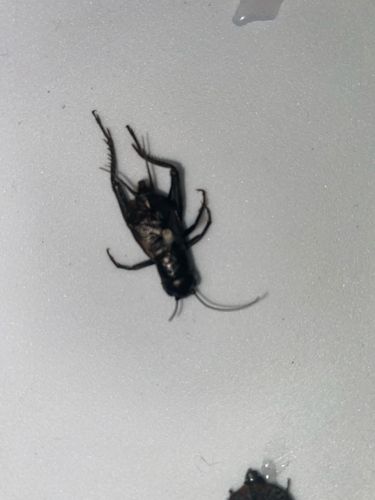Cricket
Scientific Name: Gryllidae (family)
Order & Family: Orthoptera, Gryllidae
Size: Typically 1 to 5 cm (0.4 to 2 inches) in length, depending on the species.

Natural Habitat
Found in various habitats worldwide, including grasslands, forests, caves, and often in close proximity to human dwellings (basements, crawl spaces, gardens).
Diet & Feeding
Omnivorous; they feed on a variety of organic matter including plants, fungi, decaying organic material, and sometimes other small insects.
Behavior Patterns
Nocturnal, known for their distinctive chirping sound produced by males rubbing their wings together (stridulation) to attract mates. They can jump and often hide in cracks and crevices during the day.
Risks & Benefits
Potential risks include being considered a nuisance pest when they enter homes due to their chirping and sometimes damaging fabrics or paper products. They do not bite or transmit diseases to humans. Benefits include being a food source for other animals (birds, reptiles, small mammals) and contributing to decomposition in ecosystems.
Identified on: 9/17/2025